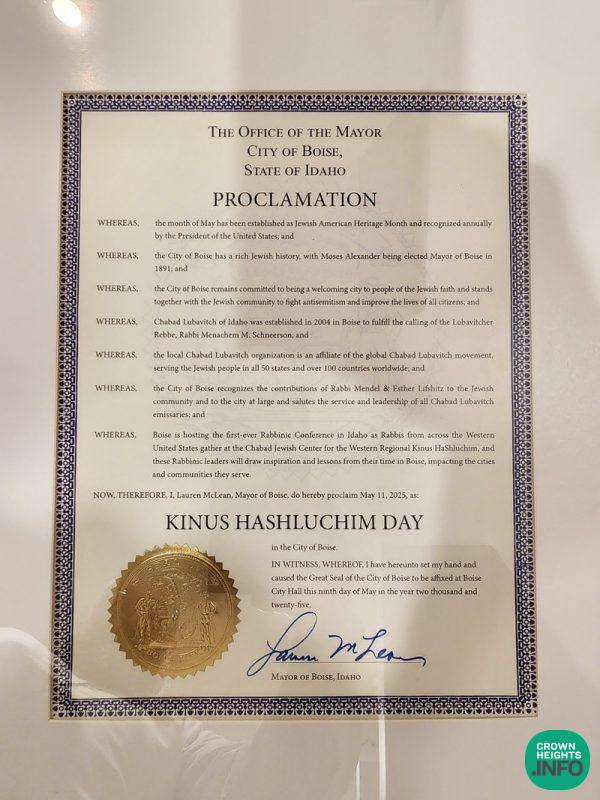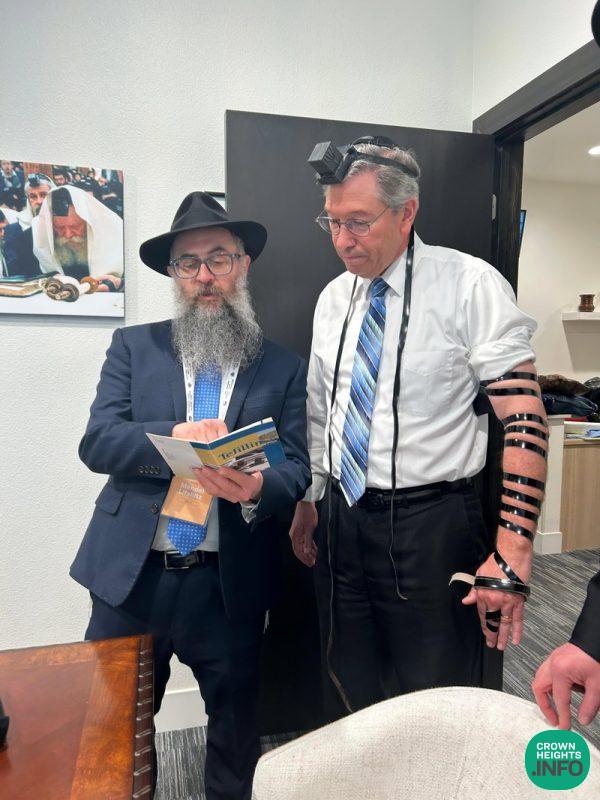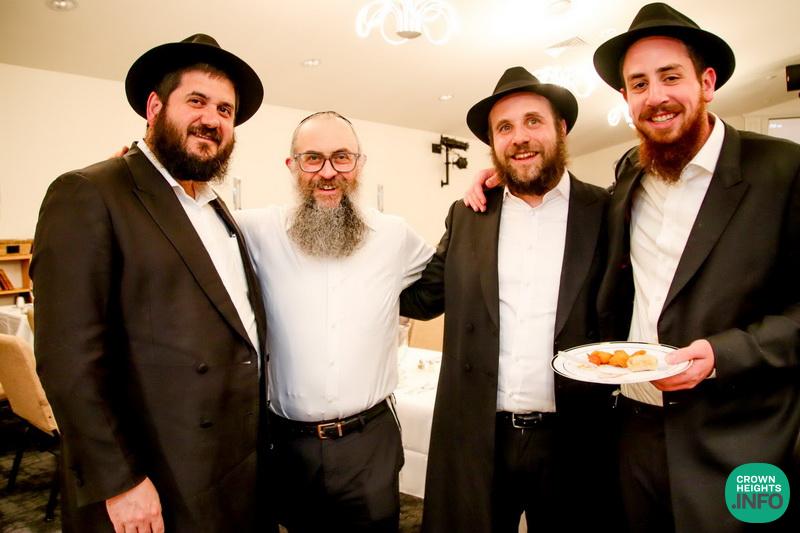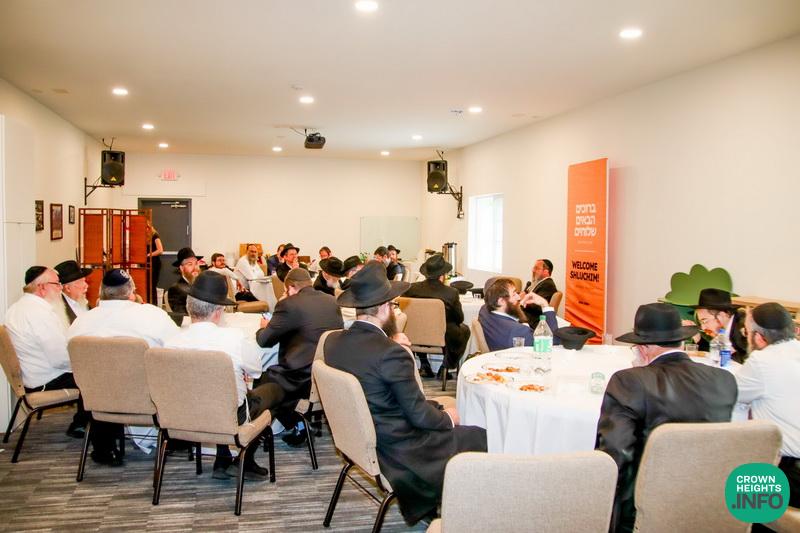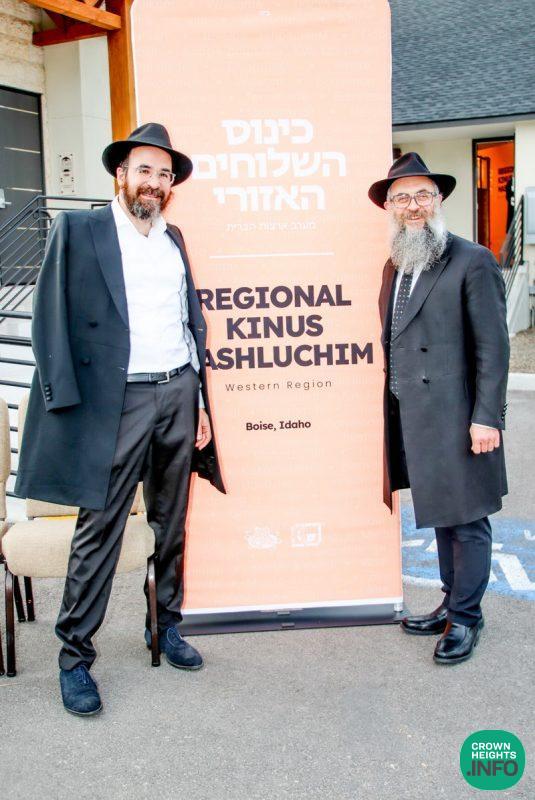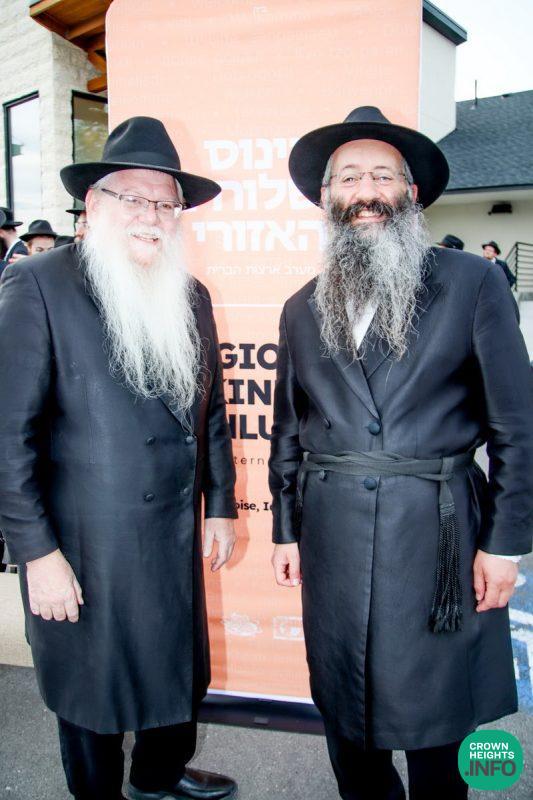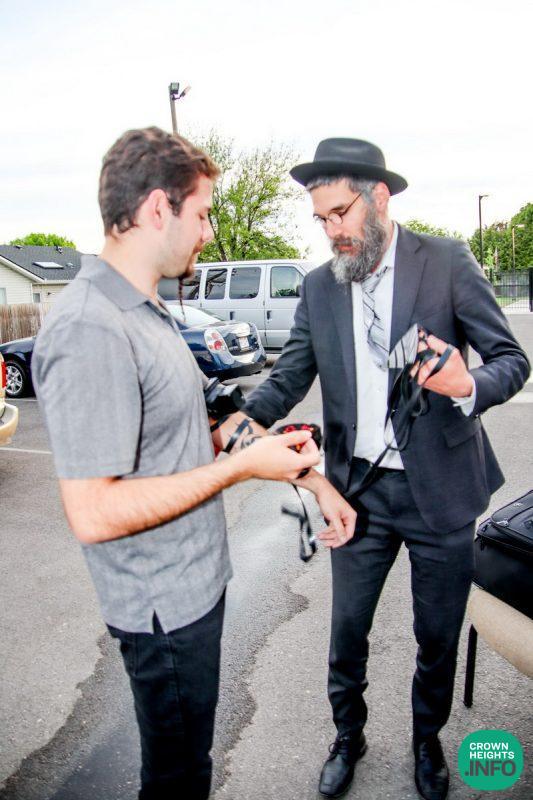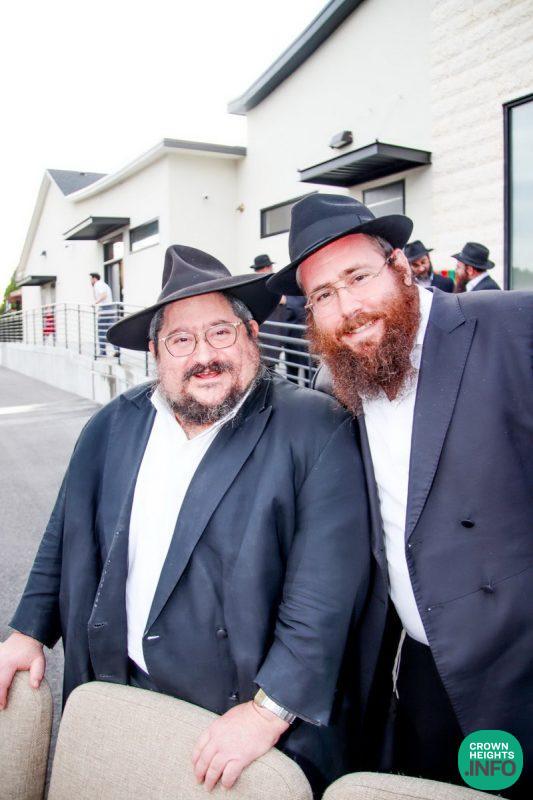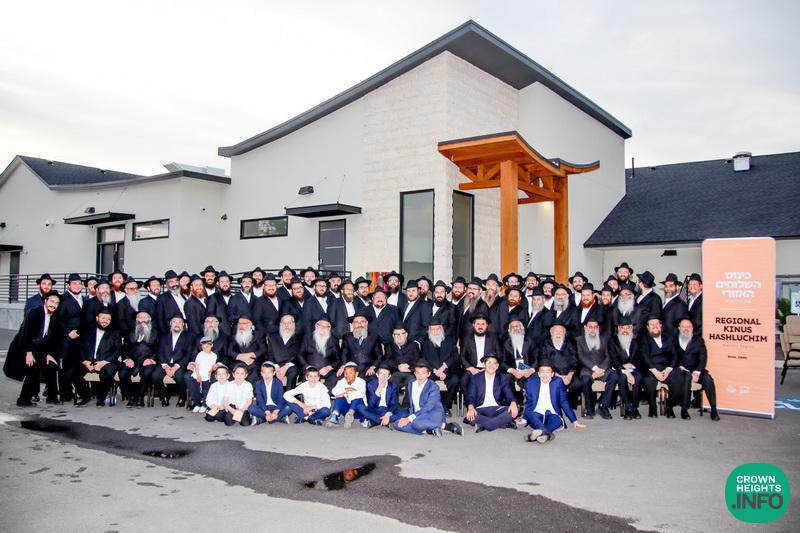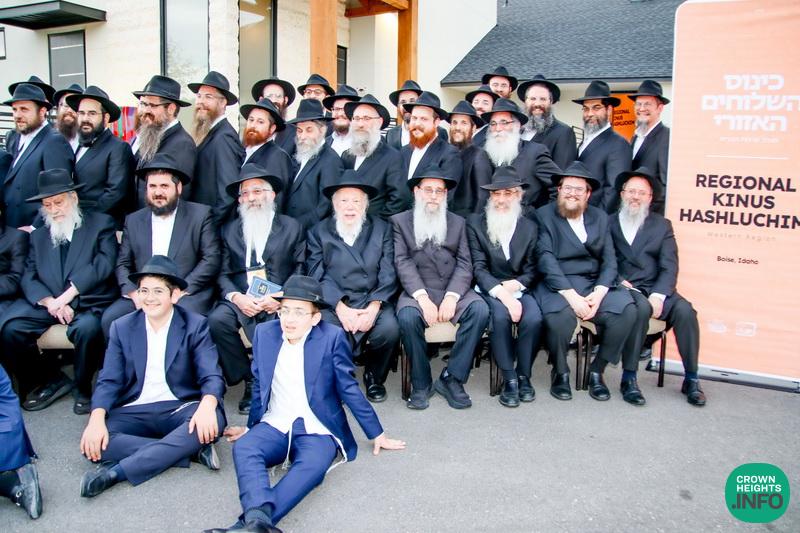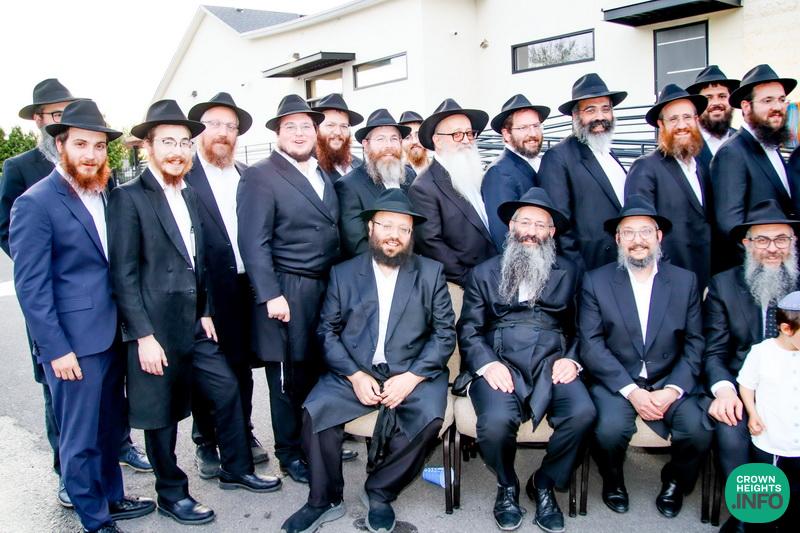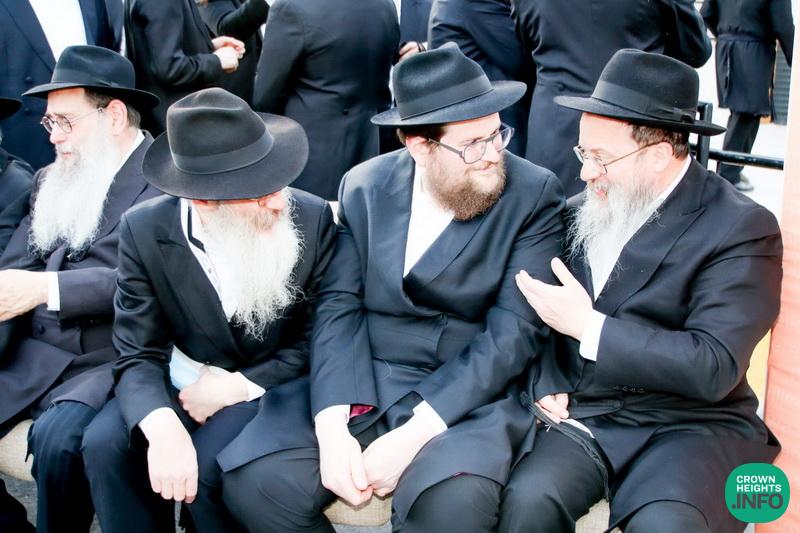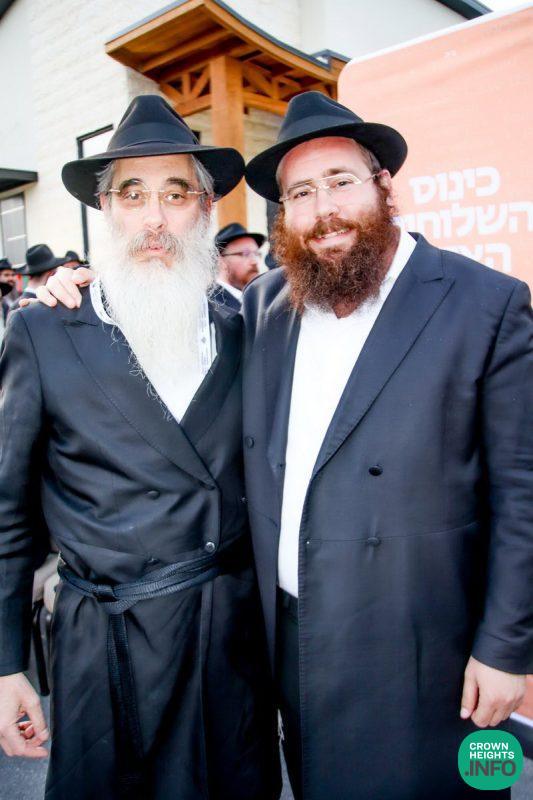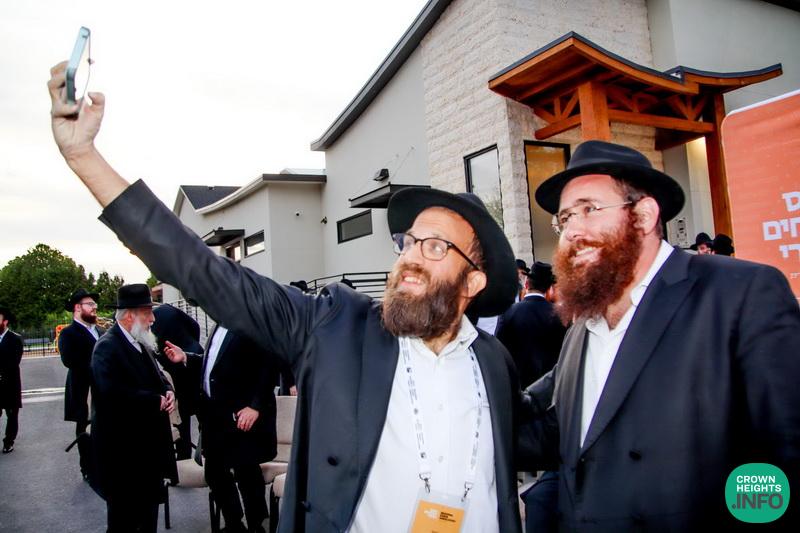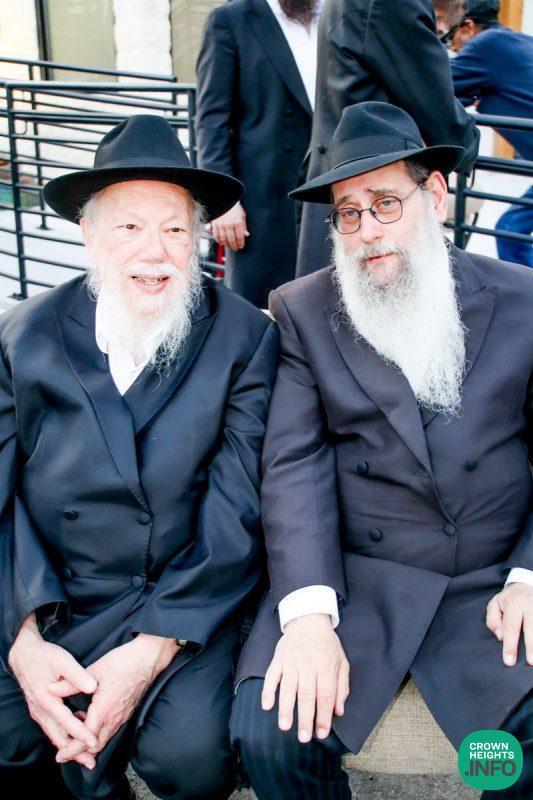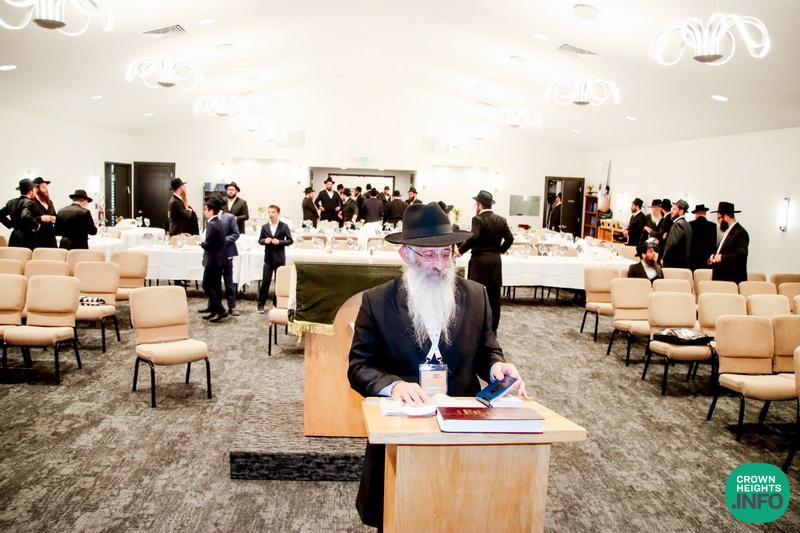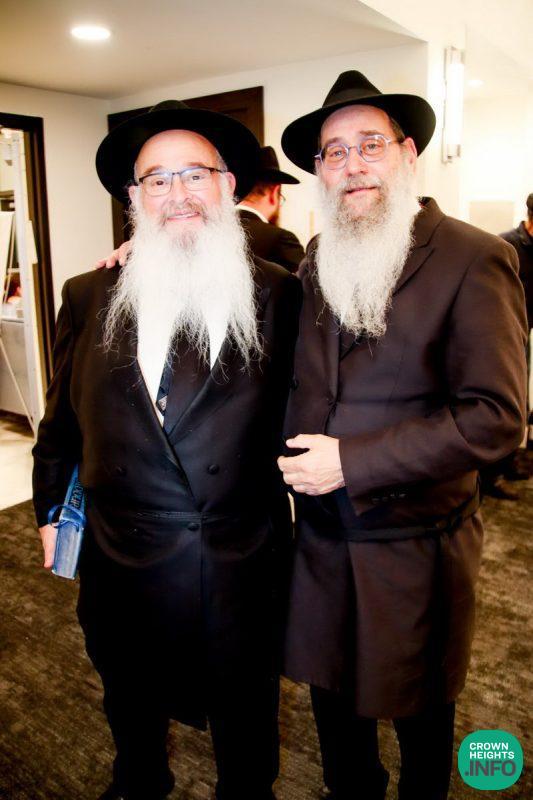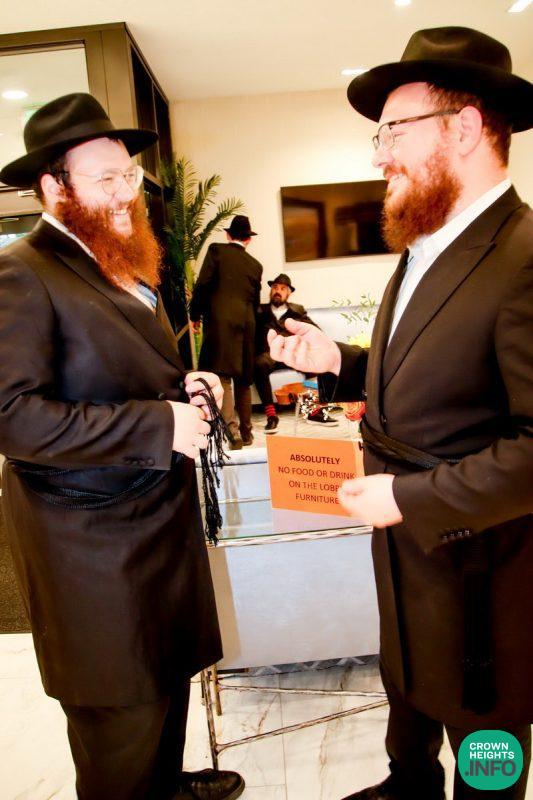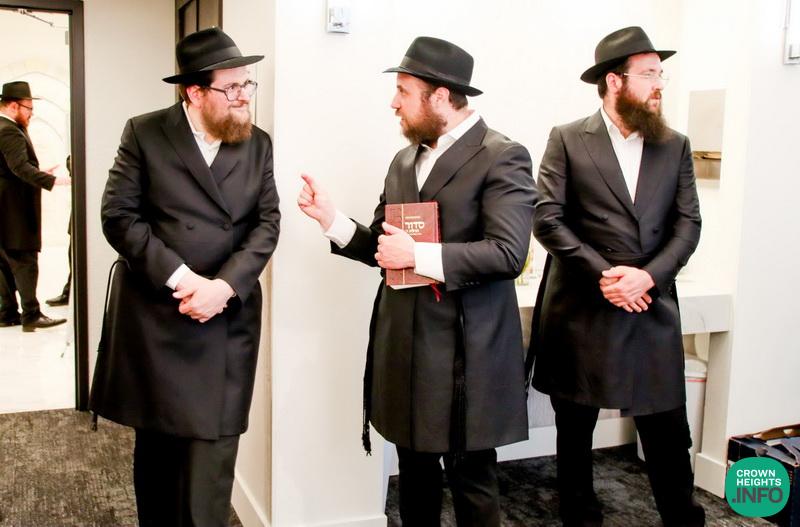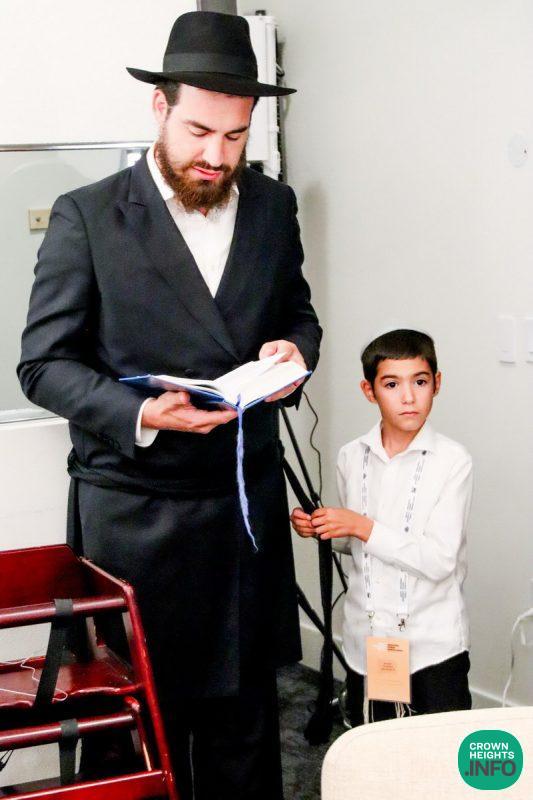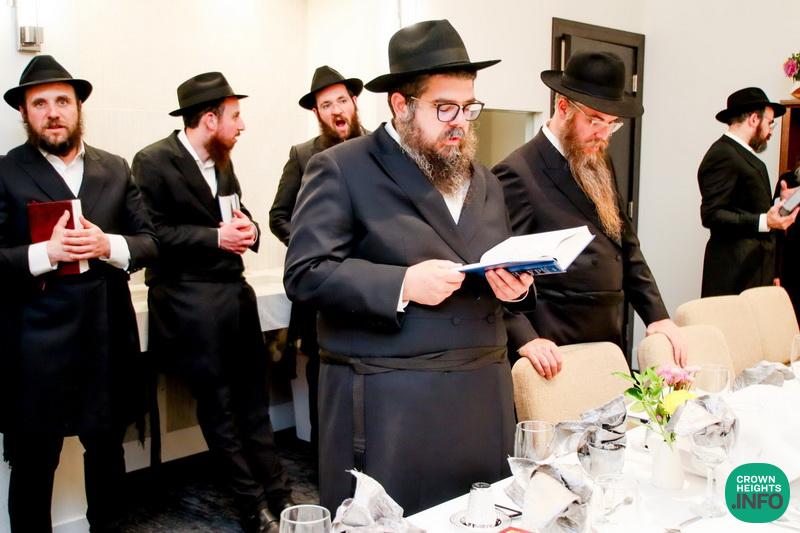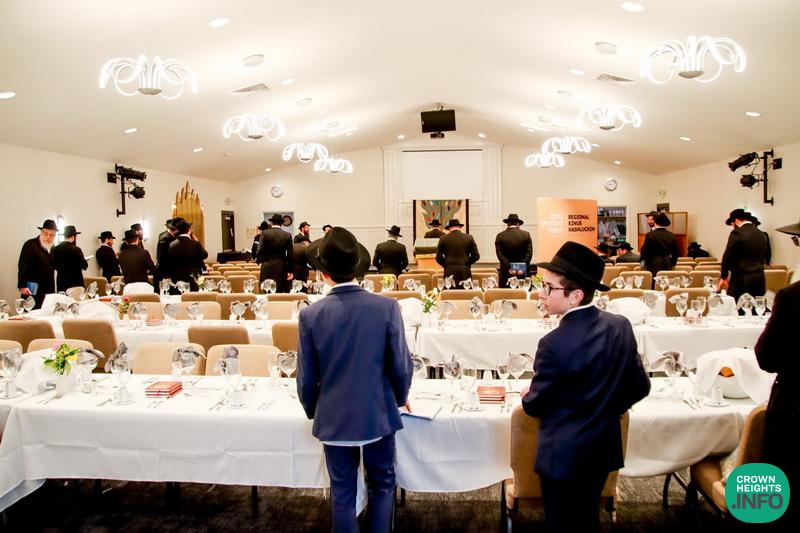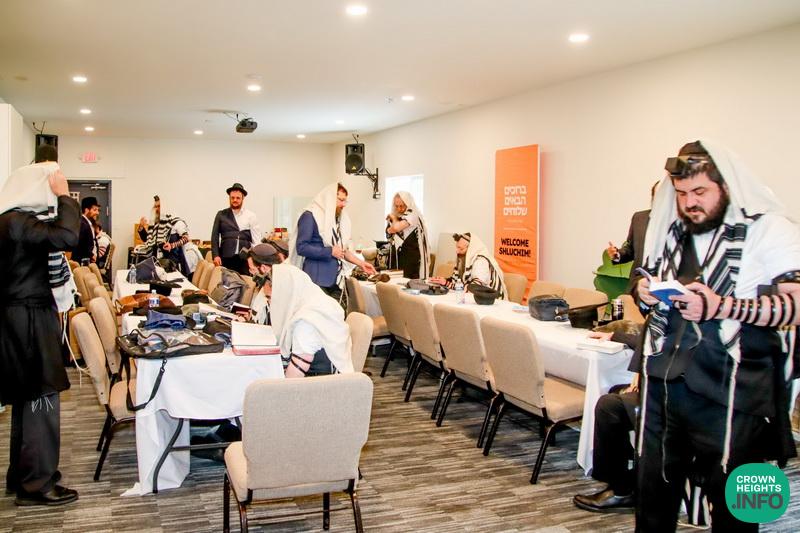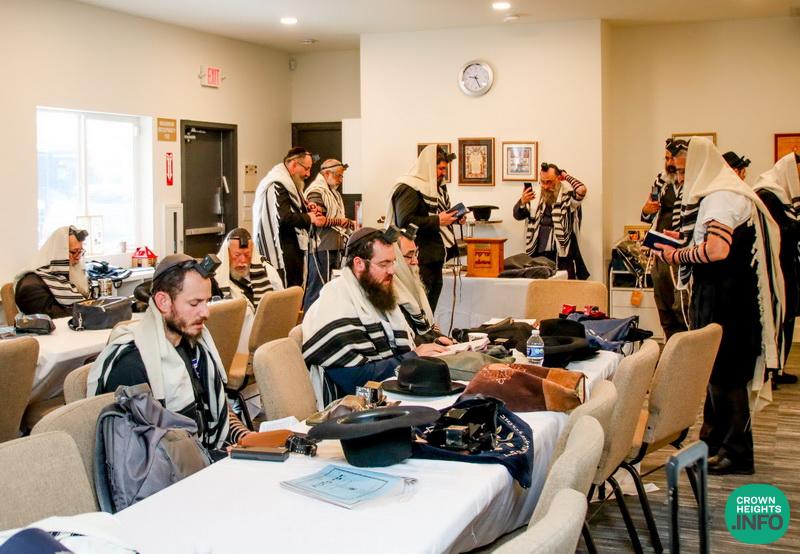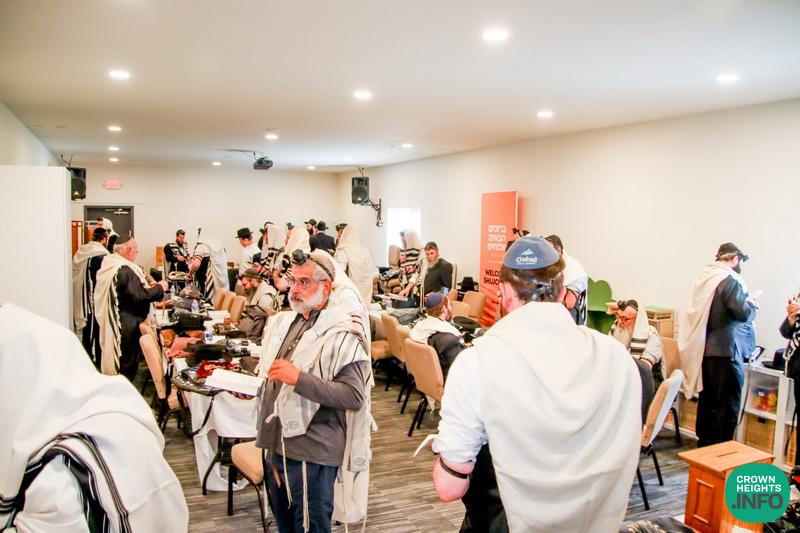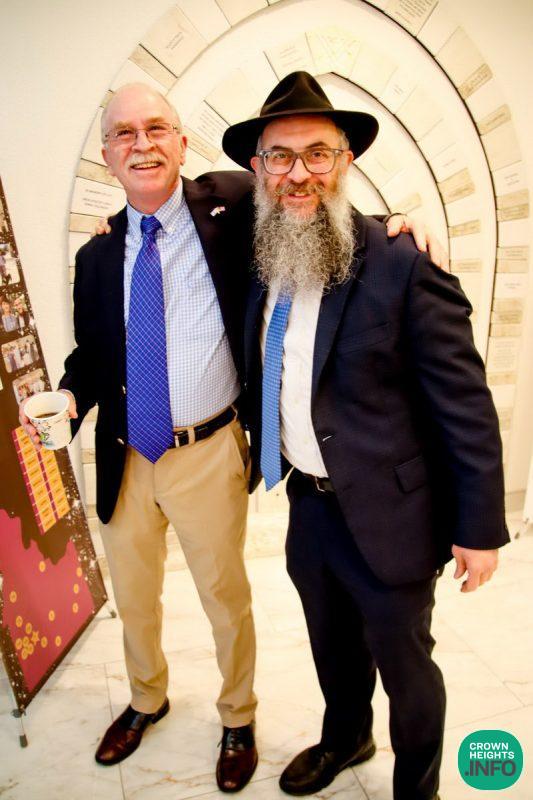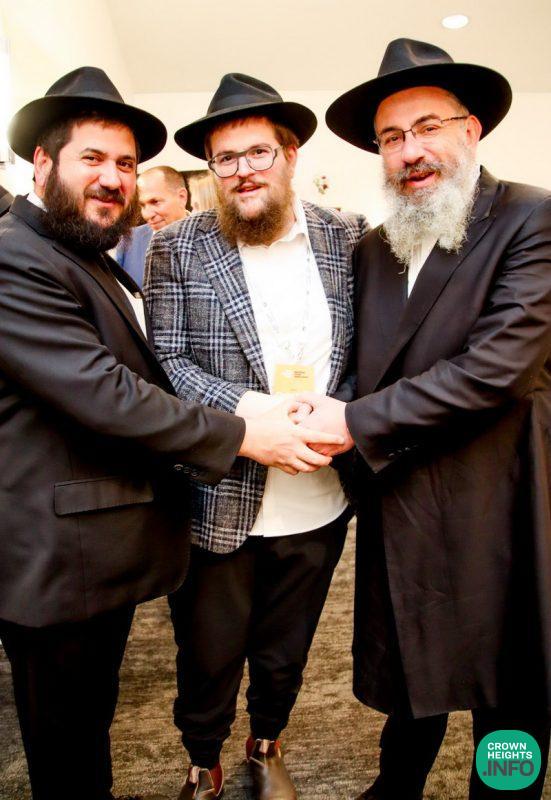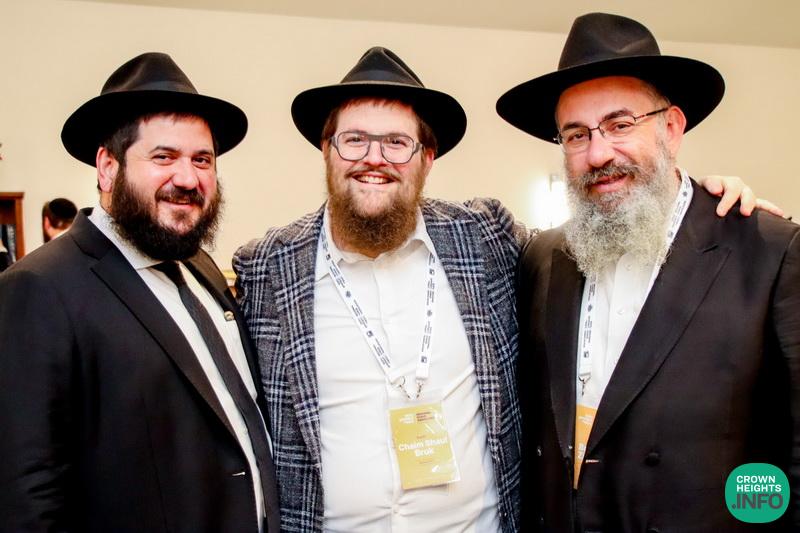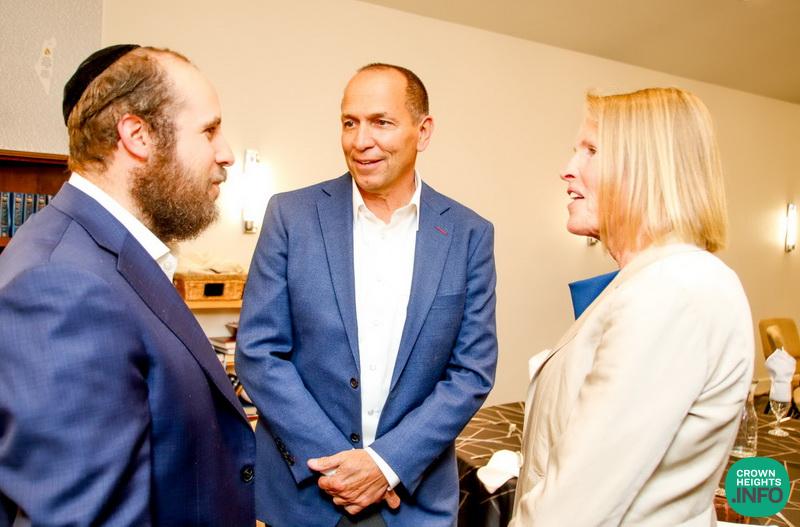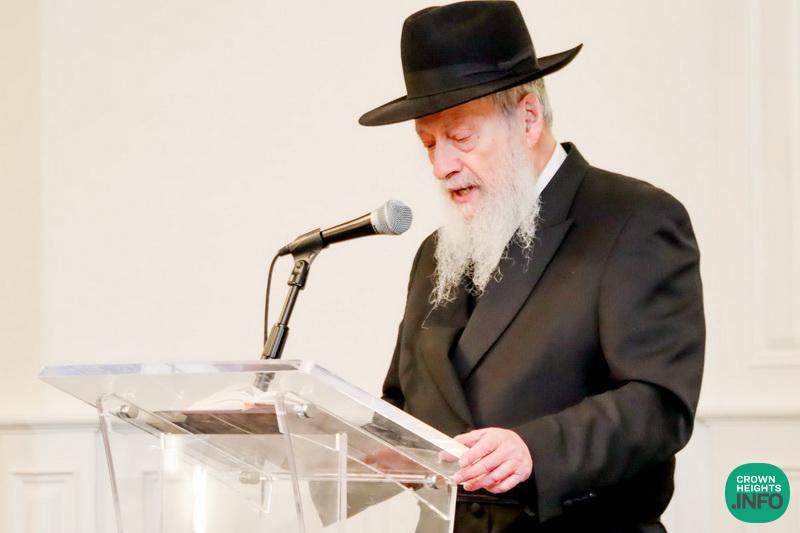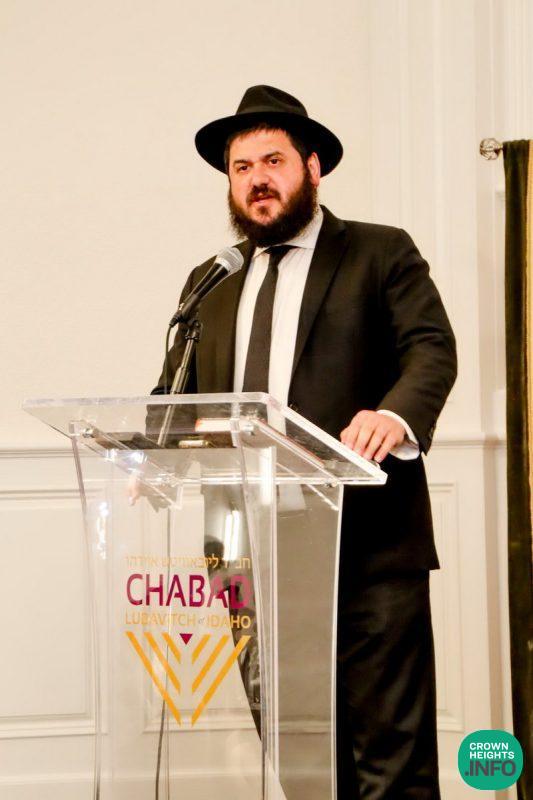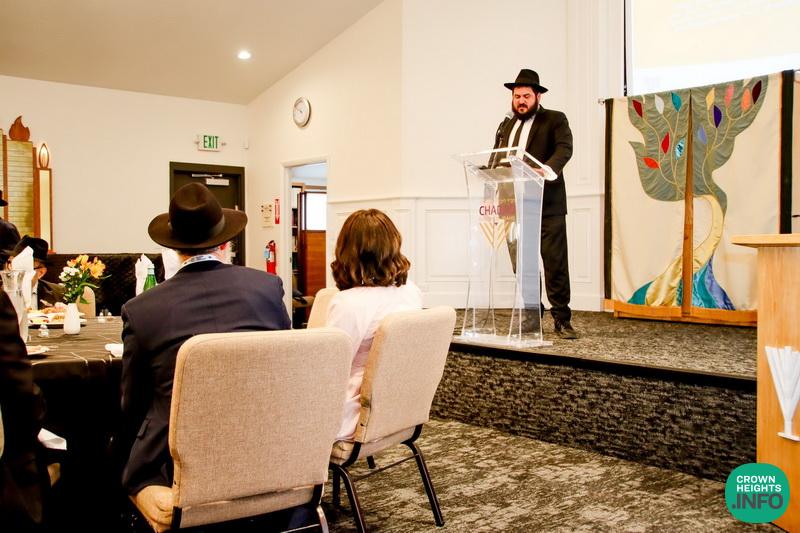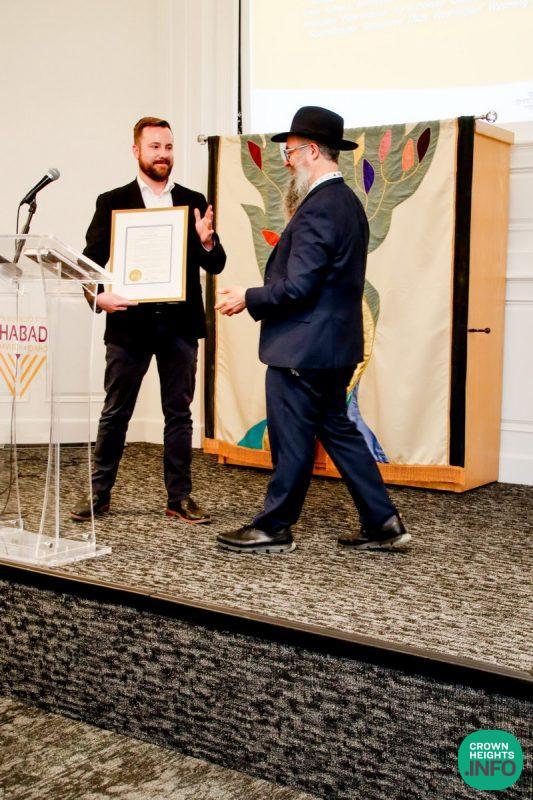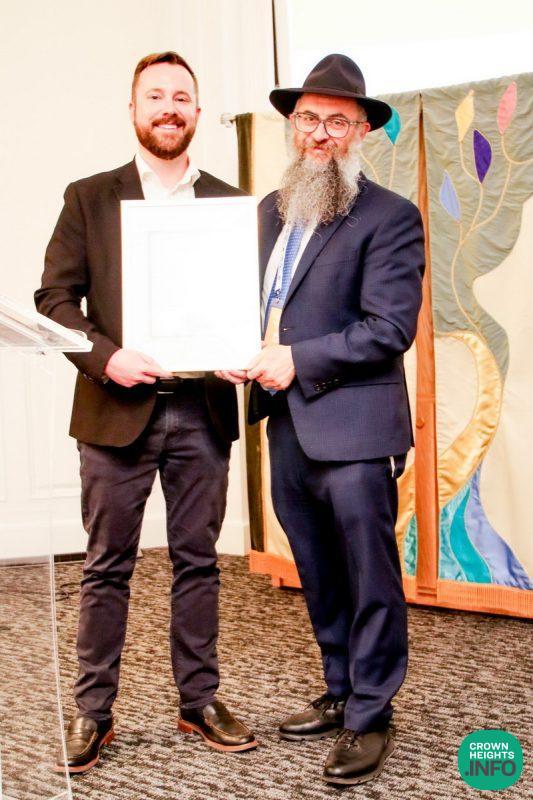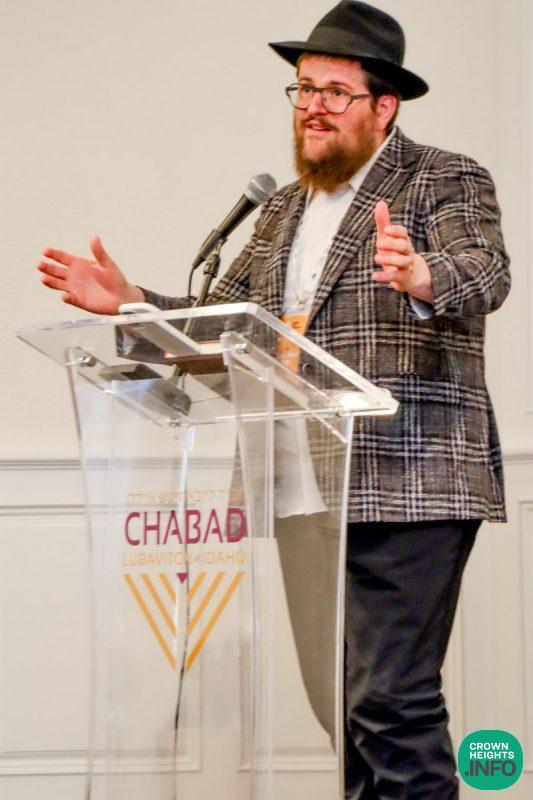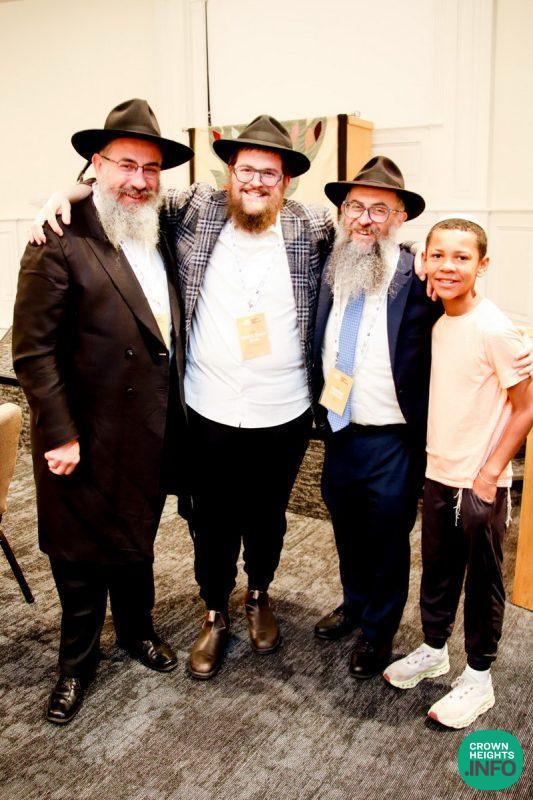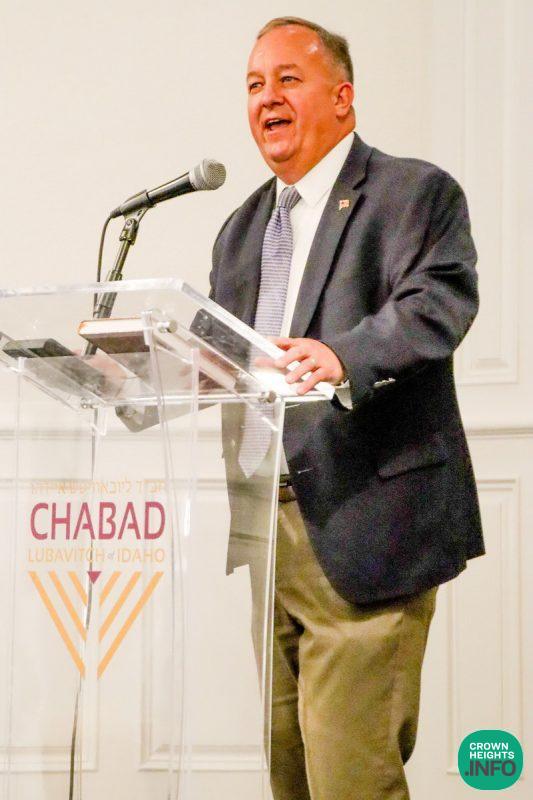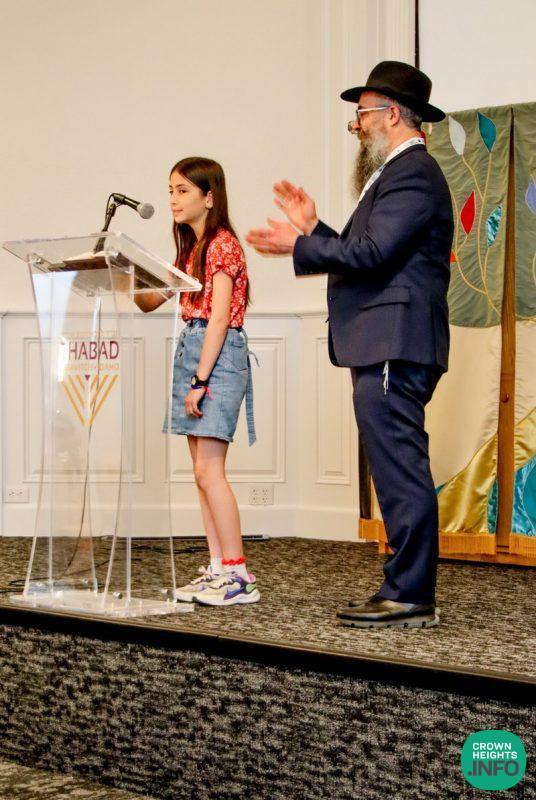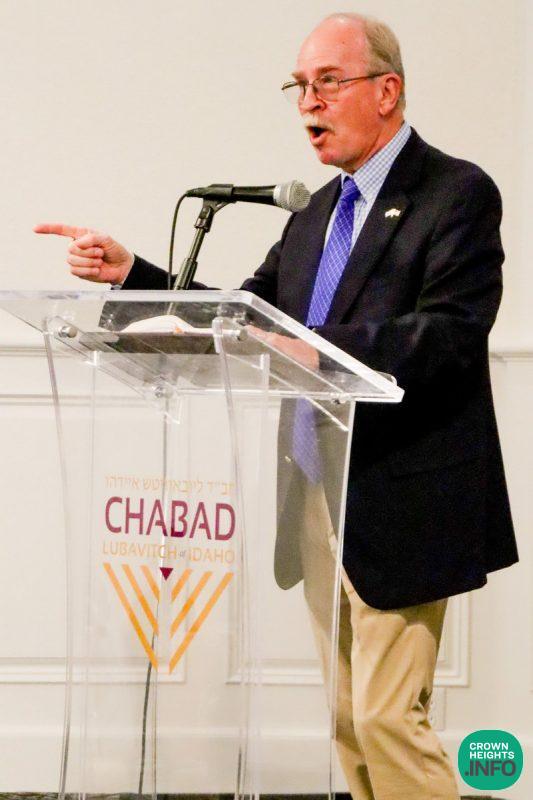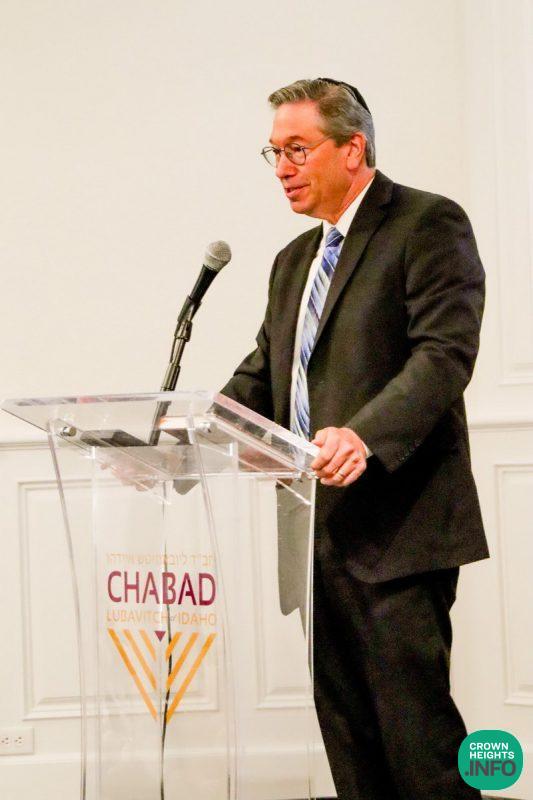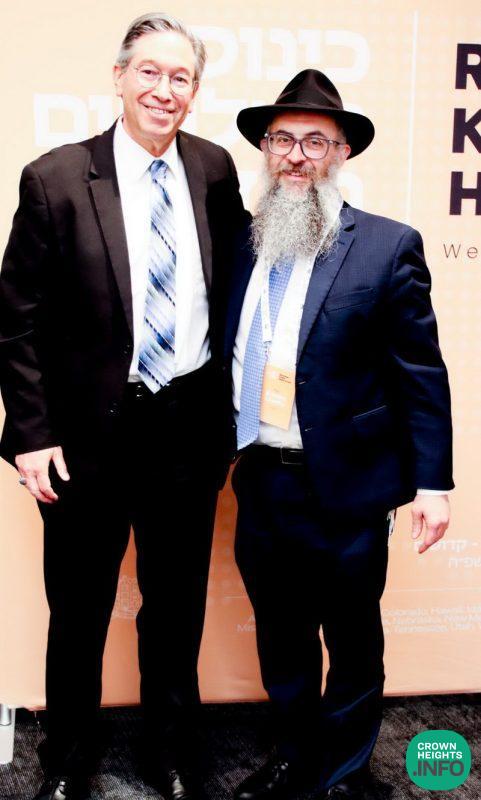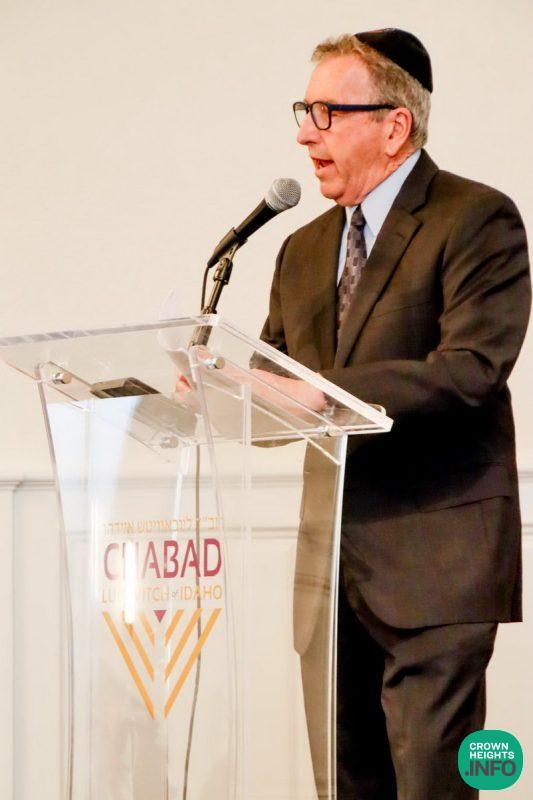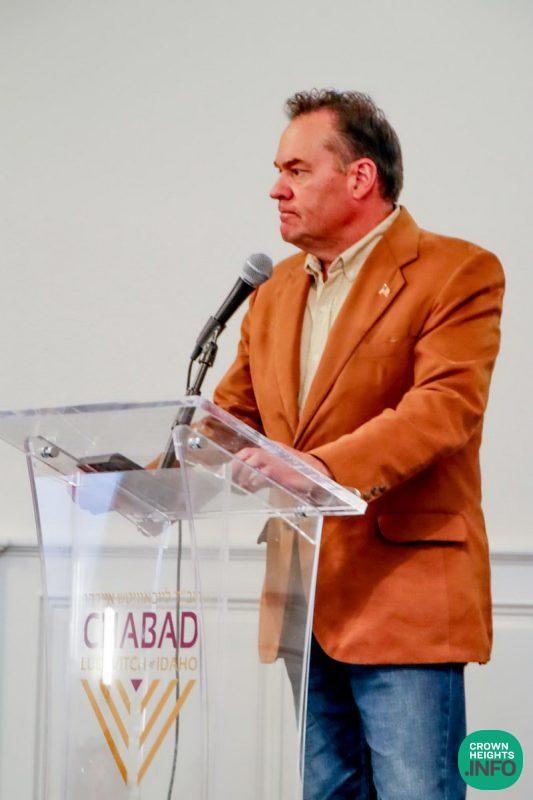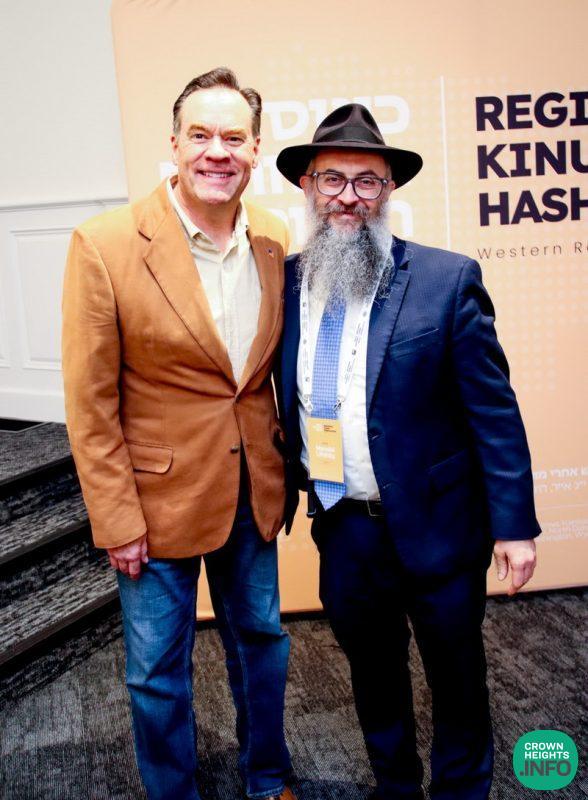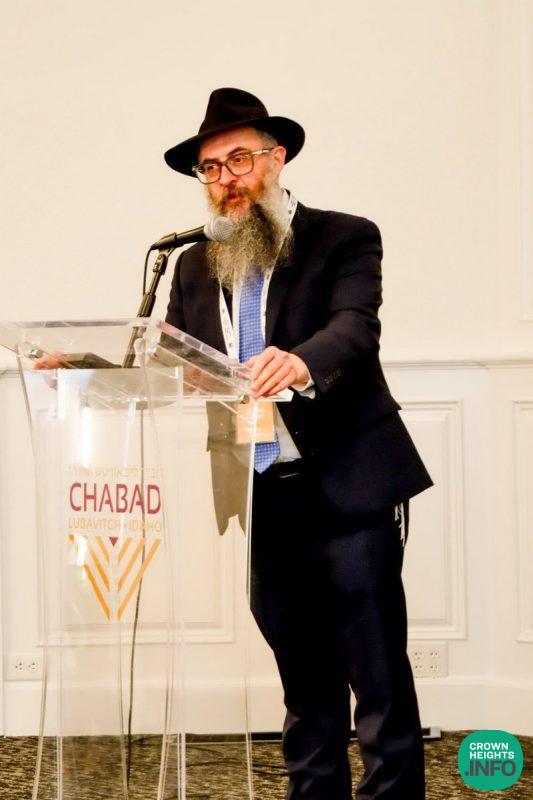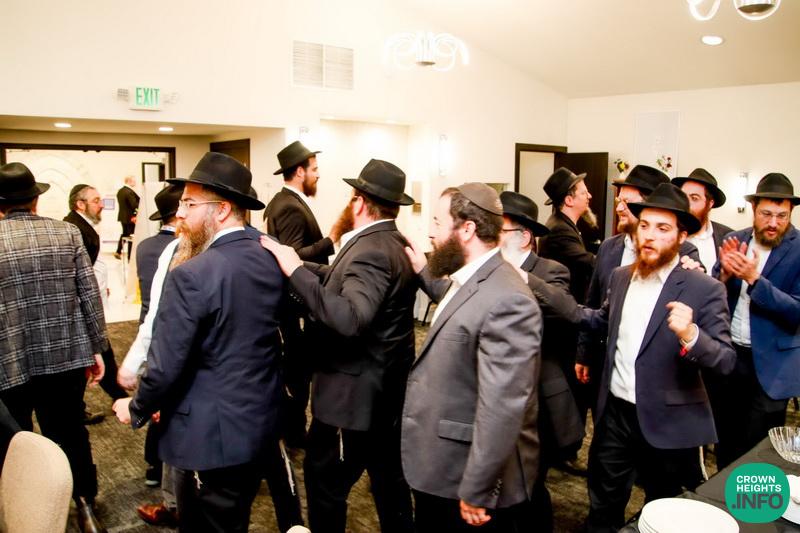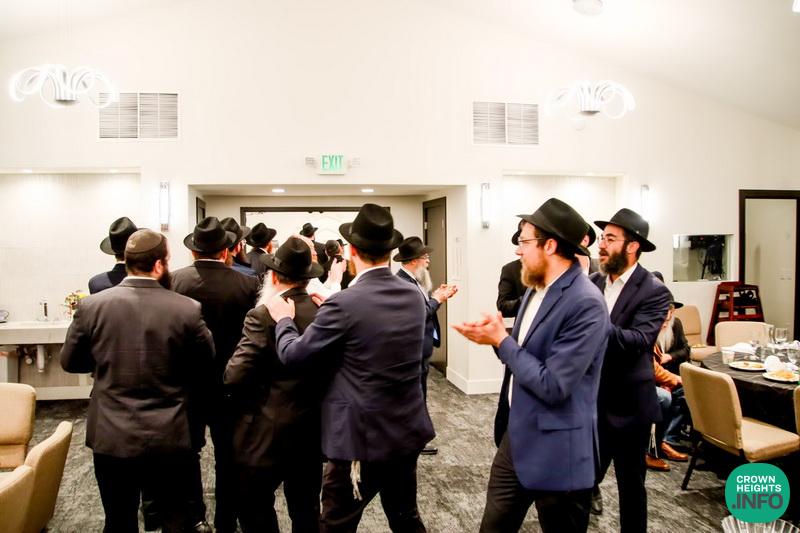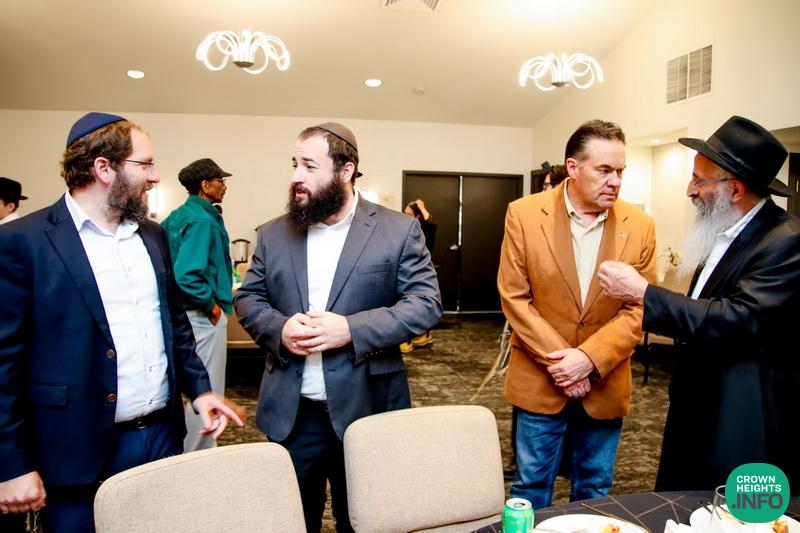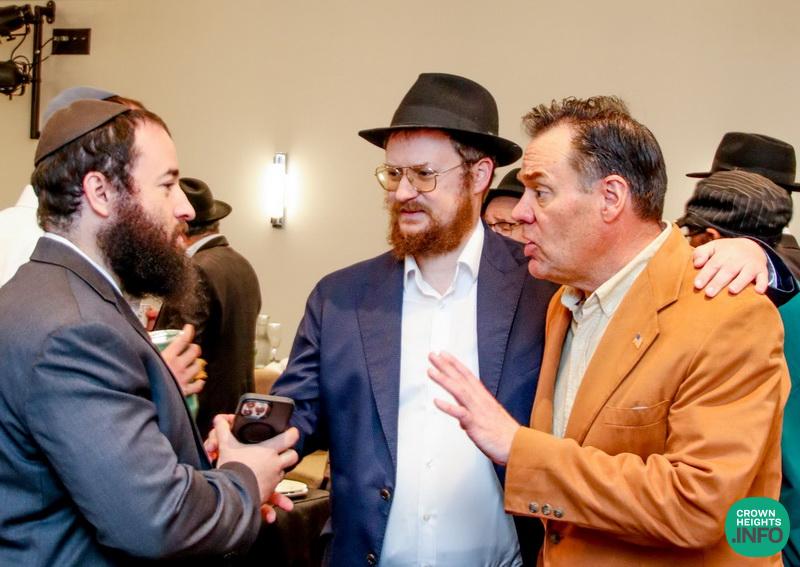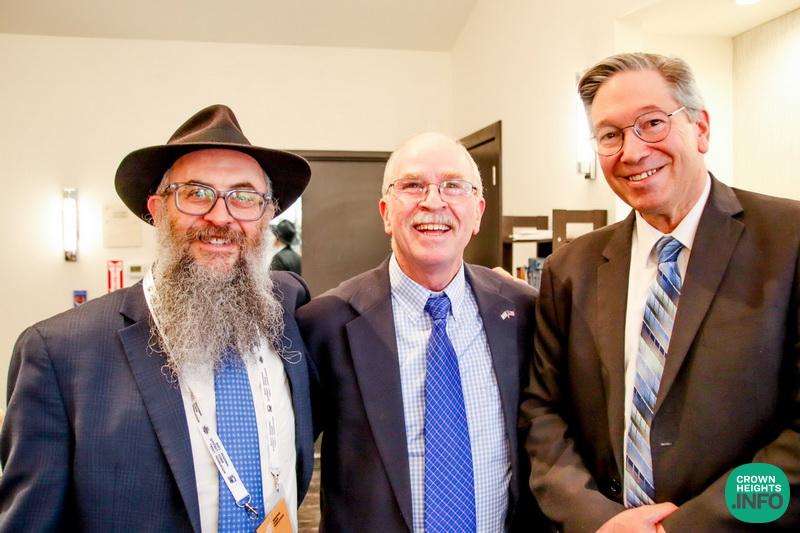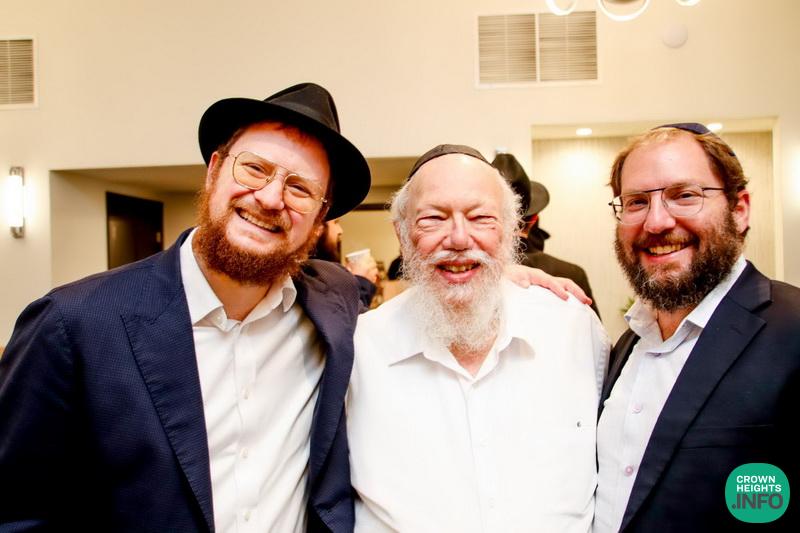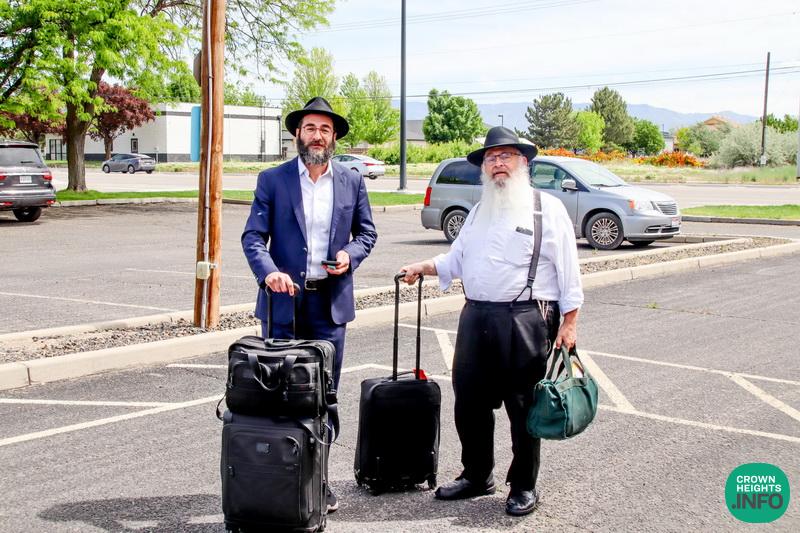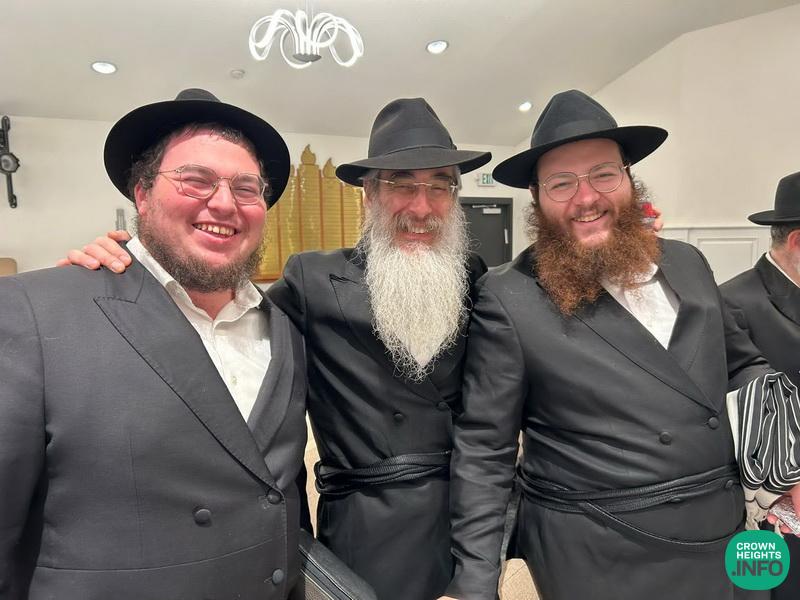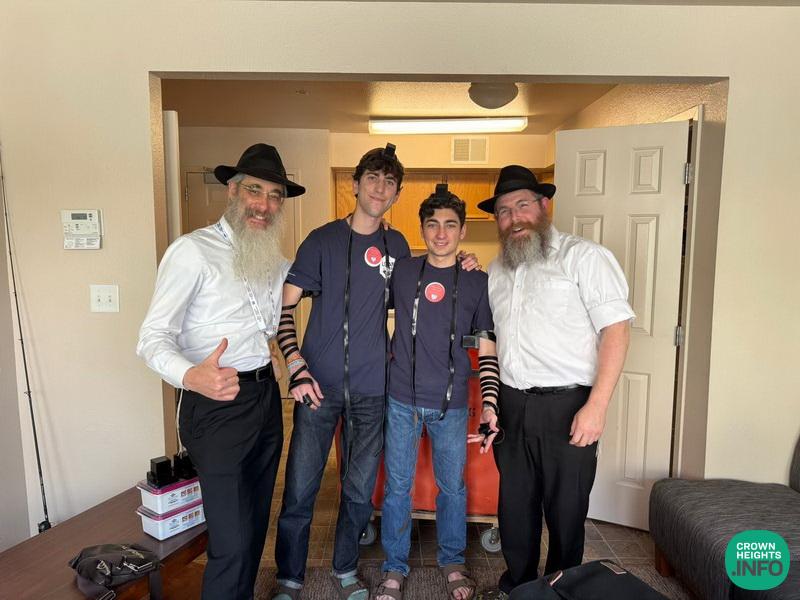
Idaho’s First Rabbinic Conference Draws 70 Chabad Leaders From 22 States, Strengthening Jewish Life One Jew at a Time
For three days, the calm, tree‑lined streets of Boise turned into a nerve center for Jewish life. Seventy Shluchim—serving as the Jewish communal framework for smaller communities across the Western United States—flew in from twenty‑two states for Idaho’s first Rabbinic Conference, and the largest ever Western Regional Kinus Hashluchim.
“What’s unique about this Kinus,” explained Rabbi Motti Wilhelm of Portland, “is that it’s a roomful of Shluchim who focus on the Rebbe’s emphasis on the individual. The stories we shared were about the one Jew—someone rescued from cremation or inspired to try tefillin for the first time. ‘Every individual counts’ is the mantra of this region.”
The conference took place at the newly expanded Chabad Jewish Center, led by Rabbi Mendel and Esther Lifshitz. Over the past year, the couple completed the new campus and inaugurated a mikvah—investments that allowed Boise to host at this scale.
“It was beautiful to see so many Shluchim strengthening one another, sharing ideas, and farbrenging,” Rabbi Lifshitz said. “Having so many in the room really energized our entire community; many locals even asked how we can make this happen every year.”
Throughout the weekend, every Shliach had a chance to share their ideas on how to address pressing issues. Many serve in cities where Jewish resources are scarce—often as the lone address for Jewish life and infrastructure—making these strategy exchanges essential. Again and again, the conversation returned to the Rebbe’s enduring call to focus on the “echad v’echad”—every individual Jew.
“These Shluchim are on the frontlines of Jewish life in America’s most remote regions,” said Rabbi Mendy Kotlarsky, director of the International Conference of Shluchim and Merkos L’Inyonei Chinuch’s efforts to drive Chabad’s global growth and expansion. “With everything happening in the world today, this Kinus was about sharpening our collective strategy to fulfill the Rebbe’s vision—that wherever a Jew may find themselves, physically or spiritually, they should never feel alone.”
As part of a broader conversation on effective strategies to fulfill their unique Shlichus by reaching every Jew, the Rebbe’s revolutionary approach of shliach oseh shliach—a Shliach empowering others—felt especially critical. Rabbi Chaim Shaul Bruk of Bozeman, Montana, shared how he uses the Merkos Shlichus program to reach towns with no organized Jewish life—encouraging fellow Shluchim to fully utilize the initiatives the Rebbe put in place.
In another town, a Shliach described the Jewish journey of a farmer two hours away, whose journey began with a single online Torah class. In Boise, that mission was embodied by community member Don Grayson, a biomedical engineer with a Ph.D., who delivers challah every Friday to Jews across Ada County.
“I joke with the Rabbi that my doctorate is finally being put to good use,” he said. “But those deliveries opened conversations that would’ve otherwise never happened—and reminded people that Judaism is present, even here.”
Workshops focused on critical topics, including security and pastoral care. Rabbi Yossi Eilfort of Magen Am walked delegates through layered security planning, and Rabbi Mordechai Farkash explored contemporary halachic challenges.
The sight of scores of rabbis was new to Boise, yet warmly received. Shluchim spent Friday doing classic Mivtzoim—visiting Jewish community members around Boise and witnessing Chabad’s impact firsthand.
“Seeing the love, respect, and gratitude the local community feels for the Shluchim was truly impressive and heartwarming,” said Rabbi Berel Levertov of Santa Fe, NM, who attended with his sons‑in‑law, Rabbi Shmuel Itkin, also of Santa Fe, and Rabbi Mendel Wolowik of San Tan Valley, AZ.
Farbrengens throughout Shabbos brought senior Shluchim recalling pioneer days and newer Shluchim mapping out next steps, leaving a strong impression on the local community.
“Bonding with other Shluchim—and meeting the younger generation who go out with such pride and dedication to their Shlichus—was deeply uplifting. Speaking with them individually left me inspired,” added Levertov.
The city and local media formally acknowledged the historic gathering. Mayor Lauren McLean proclaimed May 11 “Kinus Hashluchim Day,” citing Boise’s long Jewish history, including Moses Alexander—elected mayor in 1891 and later the nation’s first Jewish governor.
The proclamation recognized Rabbi Mendel and Esther Lifshitz “for their contributions to the Jewish community and to the city at large,” while saluting “the service and leadership of all Chabad Lubavitch emissaries.” It concluded with a tribute to the historic nature of the weekend, stating that the Kinus attendees “will draw inspiration and lessons from their time in Boise, impacting the cities and communities they serve.”
Sunday’s leadership brunch drew local dignitaries and highlighted the Shluchim’s impact. Congressman Russ Fulcher spoke of his “unwavering support for Israel and the Jewish people,” acknowledging the pivotal role Chabad plays in anchoring Jewish life across the country, and emphasizing the need for such spiritual leadership in uncertain times.
In a moment of Jewish pride, Idaho Supreme Court Justice Greg Moeller donned tefillin, sharing how deeply the gathering moved him and how central his Jewish identity remains, especially in today’s climate.
Host Shluchah Mrs. Esther Lifshitz called hosting the Kinus “a dream come true that will no doubt have a far‑reaching impact.”
The conference was dedicated l’ilui nishmas Rabbi Moshe Kotlarsky, who was personally entrusted by the Rebbe to expand global Shlichus and who played a key role in facilitating regional summits like these around the world.
The Shluchim reflected on how Rabbi Kotlarsky’s counsel and care had guided their growth—and, in many cases, made their Shlichus possible. His brother, Rabbi Mendel Kotlarsky, and his son, Rabbi Mendy Kotlarsky, carried that legacy forward at the Kinus, urging participants to strengthen their support for one another and recalling the Rebbe’s belief in the power of “ish es chavero yazoru” to inspire, collaborate, and grow.
As the final sessions drew to a close and the last flights out of Boise boarded, what lingered was not only the inspiration—but a renewed sense of shared purpose.In the words of Rabbi Levi Gerlitzky of Kona, Hawaii, who traveled nearly 3,000 miles to attend, “The most touching part for me is the Achdus, the brotherhood, that there is amongst the Shluchim. The only thing we all have in common is that we’re in remote places, in small, quiet states, far from everyone else—and committed to reaching every single Jew.”
